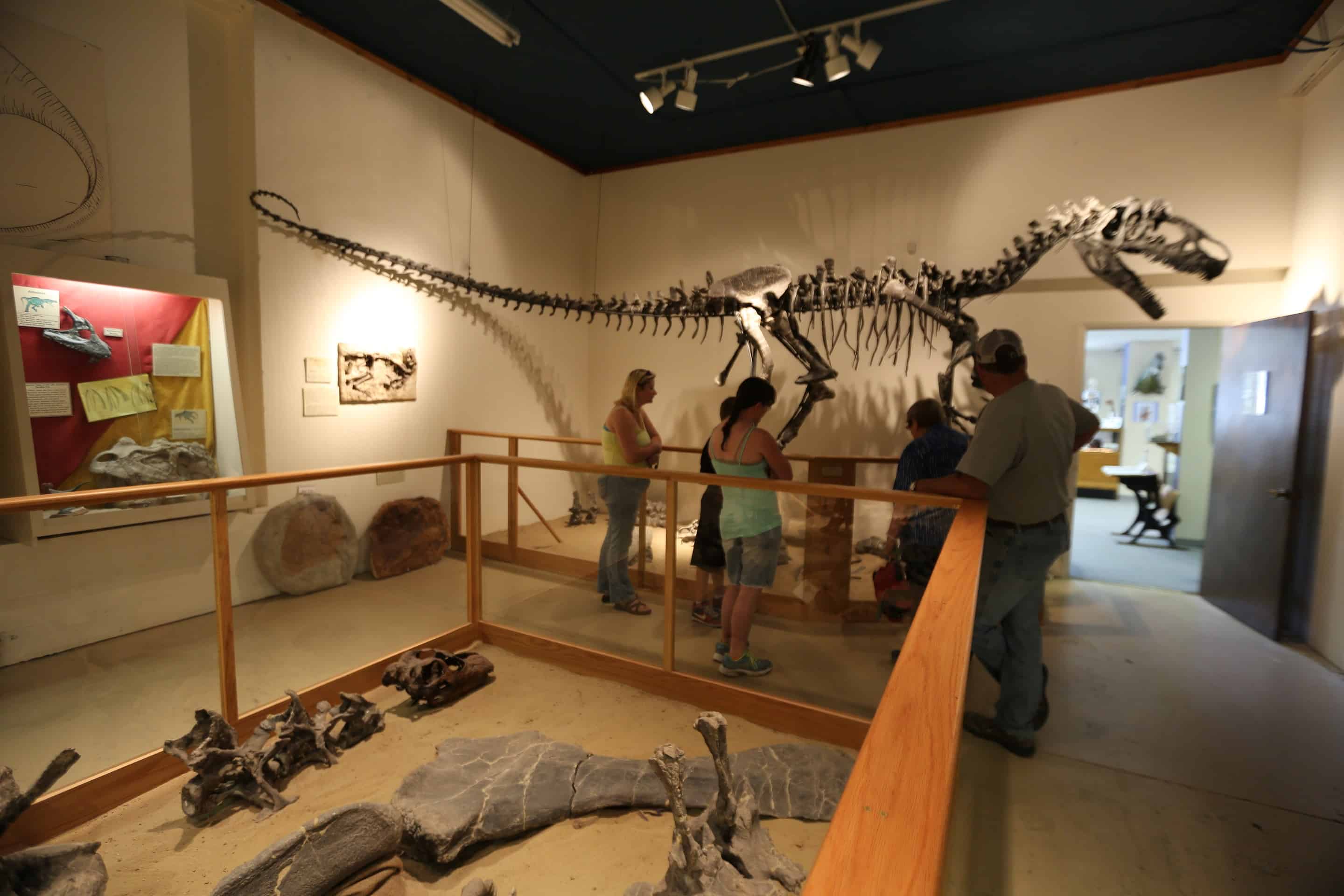
Of all the fishing trips I’ve taken in my life, nothing beats the one in Fossil Lake, southwest Wyoming, where I caught my limit of extinct Knightia and Diplomystus.
There was no actual water involved, just a blistering hot quarry that was once an ancient lake, and so my family was transported to the dusty fishing zone by air-conditioned truck instead of motorboat. There were no rods involved either, just hammers and long, flat-edged blades.
They call it fossil fishing. The goal is to excavate fossils – mainly fish – that are preserved in the limestone layers of the Green River Formation. We did it on leased land near the city of Kemmerer and Fossil Butte National Monument, which calls itself “America’s Aquarium in Stone.” Birds and fish are the most plentiful fossils in these parts, followed by reptiles and mammals, and then amphibians, arthropods and plants. Which brings us back to Knightia and Diplomystus.
 Fossil Butte National Monument Museum
Fossil Butte National Monument Museum
We gently hammered our blades between fine-grained limestone layers as instructed, twisted them to create air pockets and slowly separated the layers to see what treasures lurked between them. Call it beginner’s luck: we found so many fossil fish – some in fragments, others remarkably intact – that we had to prioritize which to keep.
The jagged, fragile pieces of rock were packed into a wooden pallet and taken back to Ulrich’s Fossil Gallery where our guide squared the chunks with an electric saw and then wrapped them for our drive back to Alberta.
WYOMING IS FAMOUSLY HOME TO Yellowstone National Park and two iconic mountain ranges (the Rockies and the Tetons), but the less-travelled area between fossil fish-rich Kemmerer and dinosaur-rich Thermopolis is an unsung treasure. “Caution: sage grouse crossing the road,” warned one highway sign showing a nuclear family of plump birds.
“Caution: Antelope entering highway at 55 mph,” warned another as we roadtripped through sagebrush country.
Those critters stayed out of harm’s way as we drove to the Wyoming Dinosaur Center where we ogled a skeleton of Triceratops, the official state dinosaur, and then dodged rattlesnakes and scorpions in a quest to unearth dinosaur bones.
That happened on a private dinosaur dig where we wielded oyster knives, dustpans and artist’s brushes to chip away at limestone mud layers in search of Jurassic-era bones. I’ll never forget how our guide called Wyoming a “geologic Disneyland” and wished more people knew about its paleo-tourism.

Wilting in the unrelenting summer heat, despite the mesh shade erected over the dig site, we learned how to tell rock from bone and unearthed several dinosaur bone fragments, including one that was left buried in the ground but was deemed important enough to get an official number (BS-1785). Back at the centre’s prep lab, we finished with a lesson on how to clean rock away from dinosaur bones with tools like dental picks and sand blasters. While fossil fishing is all about collecting souvenirs, dinosaur digs are done for research with the off chance your paleo discoveries might one day be publicly displayed.
Not so long ago I contacted collections manager Levi Shinkle for an update on BS-1785. I was chuffed to learn it’s still laying in the quarry. Shinkle noted it was found near an ischium (part of the pelvis) and is “more than likely a portion of a Camarasaurus rib.”
Now when I reminisce about Wyoming, I pull out one of my favourite fossil fish and spend a few moments tracing its ancient skeleton with my finger. And then I reflect on how lucky we are to be able to boast that we once dug up the tiniest piece of an actual Camarasaurus.
When You Go:




